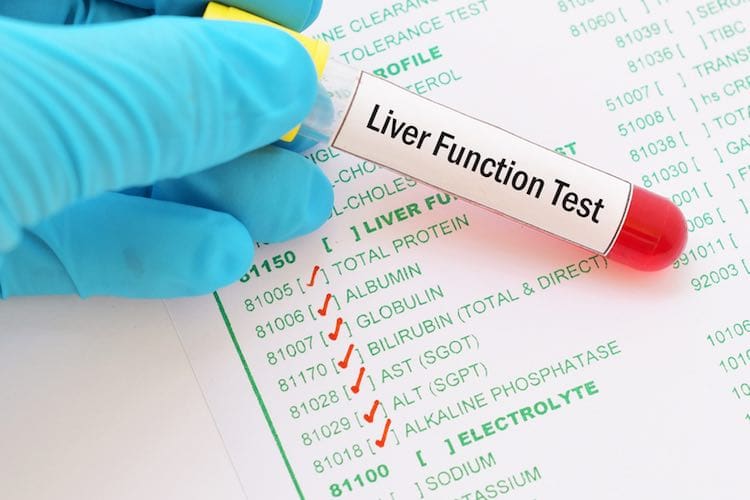Role of the liver
The function of the liver is to keep the body’s complex internal chemistry in balance. It takes raw nutrients from our digestive system (in the form of carbohydrates, protein, amino acids, etc) and processes them so they can be stored and sent to different parts of our body in the right form and quantity.
The liver regulates the level of sugars in our blood and manufactures bile (which breaks down fats in our stomach). It also helps remove toxins, drugs and hormones from our bloodstream.
This brief explanation does the liver little justice — it actually carries out over 1,500 complex biochemical functions. Perhaps it is because the liver is so important that, up to a certain point, like a lizard’s tail, it can rejuvenate itself.
What are liver function tests?
A liver function test (LFT) is a blood test that gives an indication of whether the liver is functioning properly. The test is also very useful to see if there is active damage in the liver (hepatitis) or sluggish bile flow (cholestasis).
Liver function tests measure the amount of particular chemicals in the blood. This gives a gauge of possible damage to liver cells — damage that can be caused by many things including HCV. So a more correct term for a liver test would actually be a liver dysfunction test.
It’s important to remember that diagnosis of liver disease depends on a combination of patient history, physical examination, various blood tests, and imaging studies such as Fibroscans or ultrasounds. Imaging studies have advanced in recent years and have replaced the need for liver biopsies. In very rare and exceptional circumstances, a biopsy might be needed. Diagnosis of hepatitis C can only be confirmed with a blood test called the PCR test or sometimes called a HCV RNA test.
People reading this page should keep in mind that abnormalities within liver tests don’t necessarily point to specific diseases. Only a physician who knows all the aspects of a specific case can reliably make a diagnosis.
Substances measured in liver function testing
Total protein
Total protein is simply a combined measure of the concentrations of proteins in the blood. This information can provide clues to several diagnostic possibilities. There are 2 major types of protein: albumin and globulin.
Albumin
Albumin provides a gauge of nutritional status. It can be reduced due to liver damage and kidney disease. Because albumin is made in the liver, levels tend to drop with cirrhosis.
Globulin
Describes the specific level of globulins — which include antibodies. This measure can be raised when liver cells are damaged due to autoimmune liver damage or to long-standing liver disease of many types, particularly when cirrhosis exists.
Bilirubin
Bilirubin is a by-product of the breakdown of red blood cells. It is the yellowish pigment responsible for jaundice. Bilirubin levels can be raised due to many different liver diseases, as well as conditions other than liver disease, e.g. gallstones. In cases of long-term liver illness (chronic hepatitis), the level usually stays within the normal range until significant liver damage has occurred and cirrhosis is present. In cases of short-term liver illness (acute hepatitis), elevated bilirubin levels indicate the severity of the acute illness.
GGT
GGT (Gamma Glutamyl Transpeptidase) is an enzyme produced in bile ducts that may be elevated due to bile duct illness. The GGT test is extremely sensitive and may be elevated due to any type of liver disease or by different drugs, including alcohol, even when liver disease is minimal. GGT levels are sometimes elevated even in the case of a normally functioning liver.
ALK Phos
ALK Phos refers to Alkaline Phosphatase, a family of enzymes produced in the bile ducts, intestine, kidneys, placenta and bones. These levels may rise when disease of the bile ducts or bone disorders occur.
ALT
ALT (Alanine Transaminase) is an enzyme produced in hepatocytes (the major type of liver cells). ALT level in the blood is increased when hepatocytes are damaged or die — all types of hepatitis (viral, alcoholic, drug-induced etc) cause hepatocyte damage. Levels of ALT may equate to the degree of cell damage but this is not always the case, particularly with hepatitis C. An accurate estimate of liver cell damage can only be made by liver biopsy.
AST
AST (Aspartate Transaminase) is similar to ALT above, but less specific for liver disease because it is also produced in body muscle cells. It does tend to be higher than ALT in cases of alcohol-related liver disease.
Platelet count
Platelets are the smallest of all blood cells and are involved in promoting clotting of the blood — normally a process of healing. In cases of chronic liver disease where cirrhosis exists, the platelet count can be lowered — although this can occur due to many conditions other than liver disease.
Adult range or normal range
This figure allows you to compare your various LFT readings with what is considered to be the upper limit of normal (by your particular laboratory). To make sense when comparing results to other people’s, someone’s readings should be quoted as 108/45, i.e. their actual result (108) as compared to their laboratory’s normal upper limit (45).
For more information about anything in this factsheet, phone the Hepatitis Infoline on 1800 803 990 or go to www.hep.org.au
This factsheet was developed by Hepatitis NSW. It was adapted with assistance from Prof Bob Batey and Prof Geoff Farrell from an article in Positive Living,using additional internet information by Dr Howard Worman (USA).

